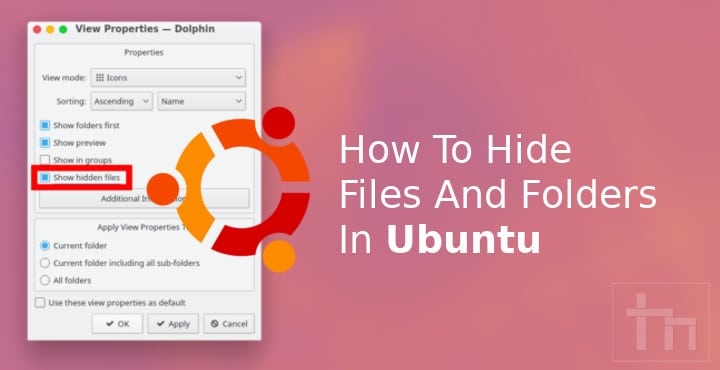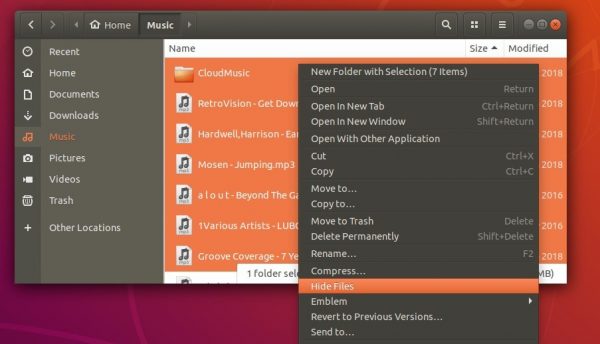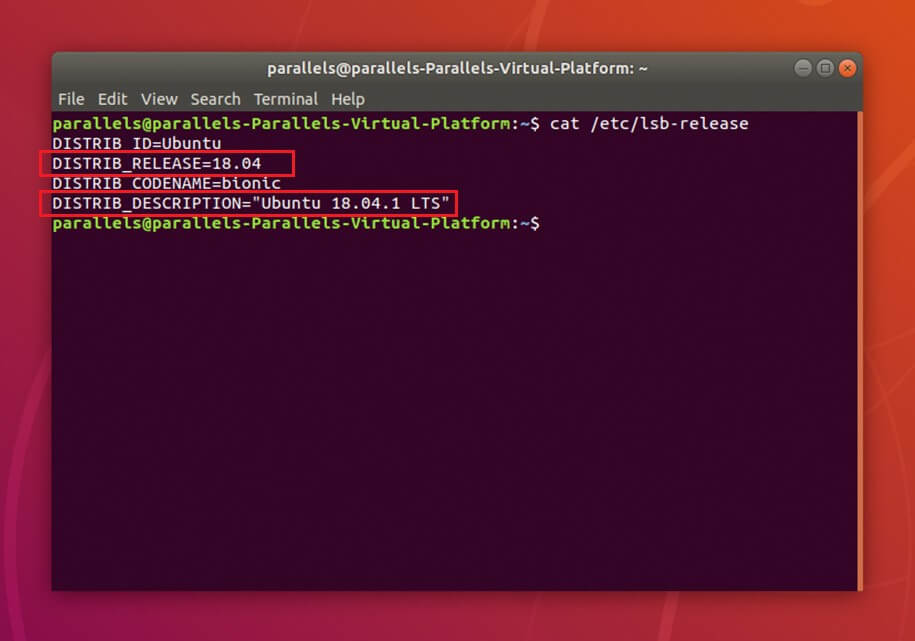

The most recently modified files and directories will be shown at the top of the command output. Use ls -halt command in terminal to display files and directories based on modification time and date in a human-readable format. List Files Based on Time and Date in Human Readable Format The most recently modified files and directories will be shown at the bottom of the command output. For example, if you want to hide a file, navigate to the folder, where it is present or if you want to hide a folder, navigate to the location, where the folder is present. Use ls -tr command in terminal to display files and directories based on modification time and date in reverse order. Open a Linux terminal and navigat e to the location of the file or folder, which is meant to be hidden. List Files Based on Time and Date in Reverse Order

#Show hidden files terminal ubuntu how to#
Knowing how to hide a file or folder in Ubuntu will. You can also pass more than one directory to ls, and have them listed one after the other. Options and file arguments can be intermixed arbitrarily, as usual. The ‘ls’ program lists information about files (of any type, including directories). Using ls on Different Directories To have ls list the files in a directory other than the current directory, pass the path to the directory to ls on the command line. Ls command options -a and -l can be used with Ubuntu ls command to show hidden files in Ubuntu using terminal command line. Use ls -t command in terminal to display files and directories based on modification time and date. Using a option with ls command will display the hidden files as shown in the above image. ls -1 We’ll discuss that weird-looking filename at the top of the listing in a minute. ** Don’t forget to change directory_name to available directory name on your computer. 58 Distro Ubuntu 10.10 Maverick Meerkat How to show hidden files and folders in console In the GUI, pressing Ctrl+H could display the hidden files and folders. Use ls /directory_name command in terminal to display all files and directories along for the other directory. Use ls -a or ls -all command in terminal to display all files and directories along with hidden files for the current working directory. For newer versions, the image displayed below works. Going there with the GUI and pressing CTRL+A (selecting all files) it counts 5058 images. The accepted answer is correct for older versions of Ubuntu. In this tutorial, you will learn how to list and sort files by date and time in Linux or Ubuntu. 1 I have a directory with a bunch of images. By default, ls command returns the list in alphabetical order. It simply lists all lines containing occurrences of the text pattern specified, from all the hidden files found.Ls command is used to list all files and directories in linux for the current working directory. In GNOMEs file manager, the keyboard shortcut Ctrl + H enables the display of both kinds of hidden files. However, it can be confusing because it doesn’t include the name of the hidden file containing the text pattern. We then execute the grep command, which performs the pattern-matching search.

Here, we’re using the find command to search for all files with a name starting with a “.” symbol. Show Hidden Files in Ubuntu Terminal The ls command option -a will show all files and folders, including hidden ones. It also has the word Baeldung that we'll search for with grep This is an article on how to grep hidden files and directories on Baeldung You will not see this folder unless the ability to view hidden files and folders is enabled in your operating system. name ".*" -type f -exec grep -i "Baeldung" \ We’ll also see how we can use simple flags to show hidden files and directories on the command line and explore some special-purpose hidden files. We can run this command to search for the text pattern “Baeldung” in our working directory: $ find. Introduction In this article, we’ll take a look at hidden files and directories in Linux, including their purpose and some common misconceptions. This can be efficient because it ignores anything that’s not a hidden file. If you are unable to reveal a hidden file using its Properties in Windows, use the Attrib command to reveal the file. Use the files.exclude setting to configure rules for hiding files and. When we have several hidden files in the current directory, we can restrict our search scope to only hidden files. If you want to run a command-line tool in the context of the folder you currently.


 0 kommentar(er)
0 kommentar(er)
